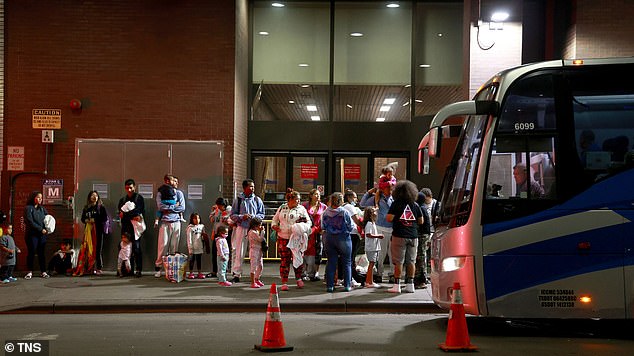Ohio health officials issued a warning to attendees at a Disney on Ice show in Cincinnati last week may have been exposed to measles.
The Cincinnati Health Department reported that a person with measles attended the March 8 show at the Heritage Bank Center, which seats more than 17,000 people.
People at the exhibition or who were in the building up to two hours after 19.00 should be on the lookout for symptoms of infection – high fever, cough, runny nose, watery eyes and rash that begins 3-5 days after other symptoms appear.
The United States appears to be heading down the road to a potential measles crisis, with cases in the first two months of 2024 nearly surpassing all of last year.

People who attended the Disney on Ice show on March 8 were exposed to a case of measles, according to local health officials (file from 2016 Toronto show)


The case in Ohio comes on the heels of two confirmed cases at a migrant shelter in Chicago
A total of 45 measles cases were recorded in the United States during the first two months of 2024 across 17 states, data from the CDC suggests, close to the number of 58 infections recorded in all of 2023.
Florida is a hotspot with at least 10 infections linked to Manatee Bay Elementary School in South Florida.
Ohio has reported four cases of measles so far this year. In one of the counties where a case was reported, Montgomery County, it was the first measles infection since 2005.
And it comes on the heels of a second case of measles confirmed at a migrant shelter in Chicago, marking the first cases in the state in five years and highlighting the public health risk posed by overcrowded migrant housing.
At the same time, the vaccination rate against the virus fell to 93.1 percent for kindergarteners during the 2022 to 2023 school year, the latest available — below the estimated 95 percent needed to stop the virus from spreading.
Measles is highly contagious and highly preventable.


Florida is a hotspot with at least 10 infections linked to Manatee Bay Elementary School in South Florida
Dr. Julia Rosebush from the University of Chicago said: ‘For people who are unimmunized and have never been exposed to the virus, the probability of getting measles is 90 per cent in close contact settings.
‘Patients with measles infection are contagious from four days before the rash to four days after the rash appears.’
That was declared eliminated—meaning the absence of continuous disease transmission for more than a year—from the United States in 2000. This was thanks to a highly effective vaccination program to administer the measles, mumps, and rubella vaccine.
But the rise of the anti-vax movement has set the US back some 24 years.
In general, when a large enough population is vaccinated, transmission of the virus can become so low that overall herd immunity protects an individual who cannot be vaccinated and is therefore vulnerable to severe infection.
Children undergoing cancer treatments, for example, are at high risk but may not get the full benefit of a vaccine.
Symptoms of the virus typically appear a week after exposure to it. They start with a runny nose, watery eyes and fever. It can quickly develop into a rash on the body.
Other symptoms may include a sore throat, white patches in the mouth, muscle pain and sensitivity to light.
Measles can be serious and life-threatening. In fact, about 1 in 5 unvaccinated people in the United States who get measles are hospitalized.
A person may suffer from pneumonia and encephalitis or a condition where the brain becomes so inflamed that it swells in size
In the United States, deaths from neurological or respiratory complications of measles occur in one to three out of every 1,000 cases.
